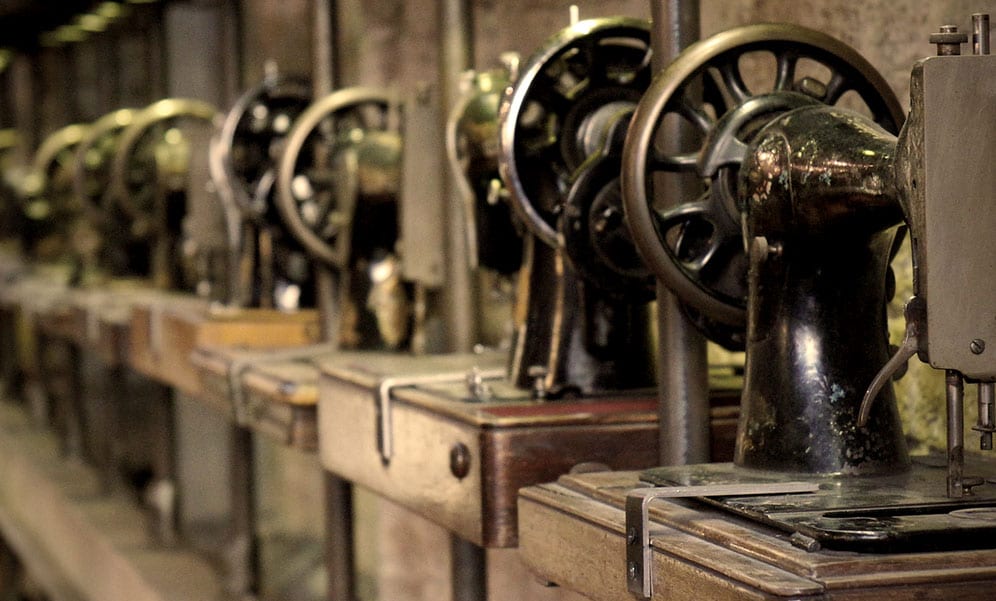The women in the group also want to participate and ask for the floor to be heard. They say it is their turn, both in the think tank and, in the future, in managing public affairs in Pueblo Viejo, and they want to share their ideas.
What has been achieved
The jurist begins with an introduction about the role of women in the field of social development, which allows us to recognize the value of our women. The attention of the audience is captured when, with the same voice that wins hearts, she begins to point out:

Over time and up to the present day, women have achieved a series of social gains.
“Women” used to mean weakness, submission, obedience, and procreation, among others. Today, “woman” means capacity, intelligence, and organization. In short, the fundamental base and support of society.
Women have reached important milestones, starting with the right to education, paid work, and identification as citizens, as well as the right to vote, which was not possible for some previous generations.
Women have earned their place with effort, in an endless struggle, even achieving a percentage of gender participation in leadership positions in government.
By improving their educational and cultural level and acquiring greater knowledge in various fields of knowledge, women have actively participated in analyzing social problems and searching for solutions. So much so that their promotion to official and private positions is a permanent reality.
All these factors have given women a certain political and social preeminence, which has influenced legislators to recognize legal equality with men, especially within the family and to the detriment of the family hierarchy.
However, despite the gains and the population, female representation in public power branches remains minimal.
In this regard, it has been important to show that what is needed is a majority that changes the politics and the country, because the key is to leave behind the old discussion of the “weaker sex” and bring ideas into the political debate, especially when what we need is to fight for a space that allows us to position ourselves more and more in local, regional, and national scenarios, with a majority population in the country that has only been used occasionally to gain votes, and political parties, when forming lists with women, try to show pluralism that does not exist in practice.

In the past, several rights of women were disregarded, but today these rights are being consolidated with the expansion of democracy and the development of rights for equality and respect for women; gains that have not come for free and have required the search for better work and political scenarios.
Achievements of Women Throughout Our History
If we take a look at these efforts and achievements of women throughout our history, we find the following milestones of Colombian women in recent decades:
1932: Until this year, women could not manage their own property, even if they inherited something. Their money was managed by their husband, brother, or male guardian. With this victory, women gained economic independence.
1933: During the government of Enrique Olaya Herrera, women achieved two important educational milestones: authorization to complete high school and the possibility of entering university.
1954: Under the government of Gustavo Rojas Pinilla, women’s political rights were recognized, allowing them to vote and obtain an ID card. Two years after this reform was approved by the Constituent Assembly, the first female ID card was issued to Mrs. Carola Correa de Rojas on May 25, 1956.
1956: Josefina Valencia became the first woman to hold a ministerial position, being appointed by Rojas Pinilla as Minister of Communications.
1957: On December 1 of that year, with a 40% participation rate of total voters, women exercised their right to vote for the first time.

1958: Esmeralda Arboleda was elected the first female senator of Colombia.
1974: Through Decree No. 2820 of 1974, equal rights and duties were granted to women and men.
1976: Through Law No. 1 of 1976, full capacity was granted to women to manage and dispose of all their property.
However, despite the achievements of women, we find that their presence in the political and economic life of our country, although significant, is still far from being real.
We have gained important spaces in democratic life, demonstrated abilities in managing public resources, and been managers of major economic projects. But proportionally, compared to men, we are still far from even approaching the percentage of control that we deserve.
Next, a political scientist, who is also part of our generation, was introduced. She referred to the celebration of International Women’s Day, which is soon to be celebrated in Pueblo Viejo, and she wanted to share the words she has prepared for that event, exclusively directed at the strong gender of human life:
“When we look at history, we find that among the French Enlightenment thinkers, such as Condorcet, one of the creators of the ideological program of the French Revolution, there was a proclamation recognizing the social role of women.
And it was precisely the Enlightenment that allowed, among many other things, women—who were previously subordinated, invisible, oppressed, and denied—to become contributors to the social transformation movement that reached its peak in 1789.
For example, from there emerged Olympe de Gouges, an advocate for equal rights between men and women, both in the public and private spheres. Her highly revolutionary ideas dealt with voting rights, access to public employment, property ownership, and the right to serve in the military.
In drafting the Declaration of the Rights of Women and Citizens, she became a forerunner of the feminist movements that joined the revolutionary flags of equality, fraternity, and liberty. Olympe demonstrated her resolve when she said, “If a woman has the right to climb the scaffold, she must also have the right to climb the podium.” She was ultimately executed by guillotine.

Social Movements
In the 19th century, women also became involved in social movements for the “three eights”: eight hours of study, eight hours of work, and eight hours of rest, which peaked in the struggles of the Chicago Martyrs.
In March 1911, a group of 140 young female workers – mostly immigrants – from a textile factory in New York decided to go on strike to demand better working and living conditions. During the protest, a fierce fire broke out, the cause of which was never discovered, and many of them were burned alive.

The tragedy had immense repercussions on labor legislation in the United States due to the horror it caused and the working conditions of thousands of women around the world. A year earlier, the Socialist Women’s Conference, held in Copenhagen (Denmark), had declared International Working Women’s Day to establish a date for simultaneous marches in multiple countries to claim their rights.
In 1911, several European countries, including Switzerland, Germany, Austria, and Denmark, celebrated Women’s Day. However, after the factory fire, solidarity spread, and the commemoration grew. Year after year, women from Russia, Western Europe, and the United States began marching. Finally, the United Nations officially set the celebration of this day on March 8 each year.
When addressing this topic, we cannot overlook the fact that in Colombia, there have been many historical instances where women were protagonists of enormous movements.
Women were fundamental in the independence struggle. Women’s participation has always been present in the conquest of social struggles.
Just to mention two lesser-known historical events: the case of heroines Justa Estepa and Concepción Buenahora, who were executed alongside brave freedom fighters with whom they organized the Pore uprising in the Eastern Plains in 1809 against Viceroy Amar y Borbón.
During the Llanero revolution, women loyal to both their men and ideals played a decisive role, especially when it came to defending their rights, life, and freedom.
In the fight for rightful social claims, we also have the 1920 strike of young female workers from the Bello Textile Factory (Antioquia). The women in this company worked under appalling conditions: barefoot, harassed by supervisors, mistreated by administrators who forced them to work while ill, enduring fourteen-hour workdays or more, with low wages, and so on. About four hundred of them decided to stop production, while the men (around one hundred and fifty) were reluctant to participate in the cessation of activities.
In this strike (the first in Colombia with that name), which enjoyed popular support, a leader emerged: Betsabé Espinal, just 24 years old, who raised her voice against the company administrator, Emilio Restrepo, the one who said, “He who commands, commands,” and called on others to join the workers’ struggle. It was not a gender-based social movement but one focused on labor rights. The women, who were later joined by men, succeeded in their demands.
María Cano, poet and labor leader, is another paradigm of women’s involvement in popular resistance. Her participation in strikes, organizing workers, and promoting new ideas earned her the title “Flower of Labor” from the workers.
New Scenarios
With these unique examples, we see that women’s struggles for their rights lead to collective social demands. However, it will be the long struggle of both men and women that will chart the path for mutual recognition of rights and the conquest of new spaces. In any case, in our country, it will be the vote for women, education, and control over fertility that marks the boundaries of significant gender achievements.
We can say that, in our context, the celebration of Women’s Day is often marked by the giving of a rose. This tradition comes from the slogan “bread and roses,” associated with the famous 1911 textile strike in Massachusetts, where female leaders demanded the right for women to receive a fair wage and work in decent conditions.
However, despite the rights women have gained over the decades, that giving of roses hides a frustrating and sad reality: gender equality is still a distant dream.
Through our abilities, we have heard that we are as capable as men. This fact has led us to forge better family living conditions through our own merits, become undeniable pillars in our households, climb professionally in various fields, be important managers of public resources, and demonstrate our capabilities on different fronts to show that women are essential to human life.
But despite the achievements we have made, gender inequality remains present and is seen in the “feminization” of poverty. Women are more likely to be poor and hungry than men due to various forms of discrimination in the education, health, and employment sectors. Internationally, women represent 70% of the poor. Although they do 66% of all work and produce more than half of the food that humans consume, they earn only 10% of the income and own just 1% of the world’s properties.
Let us look at the following aspects. In terms of human rights, greater violations are recorded against women defenders. The paradox is that most states accept international regulations to prevent, combat, and punish discrimination and violence against women. They recognize that equality and women’s rights are human rights, giving them the power to demand them. Since 1979, a network of legal instruments has been consolidating a protection system with repeated jurisprudence. The statutes of the International Criminal Court and the Tribunals for the former Yugoslavia and Rwanda addressed gender crimes during armed conflicts.
Ending for Now
Unfortunately, the increasing clarity of international legislation does not correspond with the practices of states, and this is unacceptable. There is nothing inevitable about violence against women and nothing to gain by looking the other way. On the contrary, promoting and defending women’s rights advances societies as a whole.
But let me tell you that what I want is a space for reflection, not rhetoric. An invitation to my gender colleagues to address our decisive leadership and sustainable commitment to abusive practices and discrimination.
As for violence rates, between the ages of 15 and 44, violence is one of the leading causes of death among women. Similarly, the figures are revealed when studies indicate that women and girls make up 80% of human trafficking. It cannot be ignored that in armed conflicts, women are also the primary victims of sexual violence and displacement.

In political activity, national and international political power remains concentrated in the hands of men, and with it, the decision to adopt mechanisms that seek gender equality. We have gained political rights and labor status thanks to our education and abilities, but that is not enough. The elimination of gender discrimination and the valuing of women and girls are indispensable strategies for achieving success in our fight against poverty.
In the struggle for social achievements as women, we may feel defeated at times until victory is achieved, but above all, we will never cease to be a “workshop of human beings contributing to social struggles and transformations. That is why it has been rightly said that women hold up half the sky. But in reality, we are the sky itself.”


